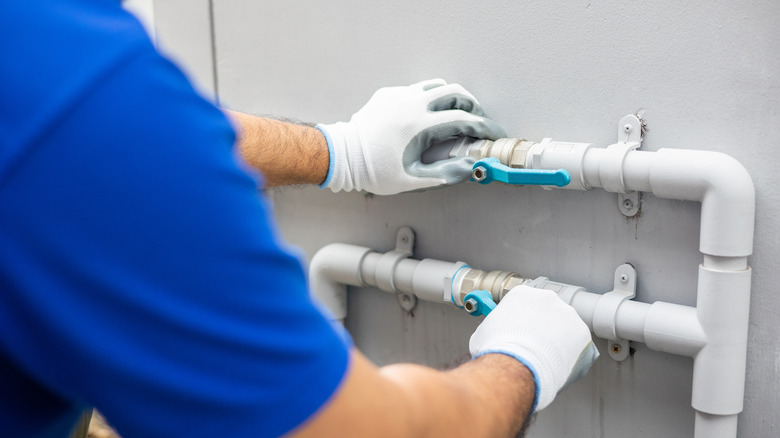Yes, I’ve been there. Bamboo is beautiful in the garden, but it can be a real pain! As someone who has dealt with bamboo problems firsthand, I want to tell you everything you need to know about bamboo roots and how they can damage your property.
The Not-So-Pretty Truth About Bamboo Roots
Let me break it down for you – bamboo isn’t just your average plant. These sneaky fellows have underground stems called rhizomes that can
- Spread up to 20 feet underground without you noticing
- Force their way through tiny cracks and crevices
- Grow super aggressively and quickly
- Burrow about 2 feet deep into the ground
How Bamboo Can Damage Your Property
Foundation and Structural Issues
We’ve seen bamboo roots cause some serious problems by:
- Breaking through weak foundations
- Damaging retaining walls
- Creating cracks in outdoor structures
- Finding their way under homes
Plumbing Nightmares
Trust me your pipes aren’t safe either! Bamboo can
- Disrupt sewage lines
- Damage sprinkler systems
- Interfere with underground utilities
- Break through pipeline connections
Running vs Clumping Bamboo: Know Your Enemy
Here’s the deal – not all bamboo is created equal
Running Bamboo
- Can spread up to 40 feet per season (yikes!)
- More likely to cause property damage
- Highly invasive
- Harder to control
Clumping Bamboo
- Grows in contained clusters
- Spreads only 2-10 feet wide at maturity
- Less invasive
- Better choice for home gardens
How to Protect Your Property
If you’re still set on growing bamboo (I get it, it’s pretty!), here’s what you gotta do:
-
Check Your Foundation
- Ensure you have a solid, crack-free foundation
- Newer homes are better suited for bamboo
- Seal all cracks and potential entry points
-
Install Proper Barriers
- Use root barriers around bamboo plantings
- Maintain barriers regularly
- Check for any breaches
-
Regular Maintenance
- Monitor spreading
- Check for emerging shoots
- Maintain sealed surfaces
The Neighbor Problem
We forget that your neighbor’s bamboo can become your problem! I’ve seen a lot of Reddit posts from people who ended up with hundreds of bamboo canes in their yard from a small 2×15-foot patch next door.
What You Can Do:
- Check local laws about bamboo growth
- Talk to your neighbors about containment
- Document any invasion issues
- Contact your housing committee if needed
When Things Go Wrong: Dealing with Bamboo Invasion
If bamboo has already started causing problems:
- Don’t panic (okay, maybe panic a little)
- Call a professional ASAP
- Don’t try DIY removal – it usually makes things worse
- Be prepared for potentially expensive removal
Prevention Tips for New Planters
If you’re thinking about planting bamboo:
- Choose clumping varieties over running types
- Install proper barriers BEFORE planting
- Plan your planting location carefully
- Maintain regular inspections
The Legal Side
Did you know some states actually have laws about bamboo? For example:
- Golden bamboo is classified as invasive in:
- Maryland
- Pennsylvania
- West Virginia
- Virginia
- Georgia
Final Thoughts
Look, I’m not trying to completely scare you away from bamboo – it’s beautiful and can be amazing when managed properly. But you gotta be smart about it! As someone who’s seen the damage these roots can cause, I always say it’s better to be overprepared than overwhelmed.
Remember: bamboo is like that friend who’s super fun but needs clear boundaries – set them early, maintain them consistently, and you’ll avoid a whole lot of drama down the road!
Want some honest advice? If you’re not ready to commit or don’t have the right tools, you might want to look into some less serious options. Your home’s foundation will thank you!.
Please share your stories about bamboo damage in the comments section below. If you’re having problems with bamboo right now, don’t be afraid to get help from a professional. Other times, that’s the best thing you can do.
Stay safe and happy gardening, folks!
Note: This article was last updated March 2024 to include the latest information on bamboo damage prevention and control methods.

Floor and plumbing damage caused by bamboo

For those of us who cant guarantee an extremely solid foundation or live in a bordering neighborhood where others may not have the best maintenance schedules, its best to leave bamboo out of your home garden. First things first, take note of what your bordering neighbors are growing. Like one Reddit user notes, a small 2-foot by 15-foot patch from their neighbors garden quickly turned into hundreds of bamboo canes all across their yard that prohibited their own plants from growing. Taking note of who has bamboo nearby can save you a lot of issues in the future. Though most species are not classified as invasive plants, local laws vary by state — Golden bamboo, for example, is classified as invasive in Maryland, Pennsylvania, West Virginia, Virginia, and Georgia. Check with your housing committee or city council to ensure you are not responsible for future issues caused by your neighbors decision.
But what happens if its already infected your home? If there are bouts of bamboo hanging around your yard, common floor and plumbing damage can seem invisible until it begins to grow through the cracks of your outdoor structures and retaining walls. Even sprinkler systems, sewage lines, and pipes are unsafe. Though most sewage pipelines are nowadays built deeper than 24 inches, the fibrous roots of bamboo burrow about 2 feet into the ground and disturb the pipes natural flow. At this point, the best thing to do is call an expert. Bamboo removal is possible, but it can be an expensive process that shouldnt be taken lightly. Without proper excavation, the bamboo will continue to burrow and bury you deeper into property damage debt.
The Secret to Killing Bamboo | NO Chemicals or Machines
0
